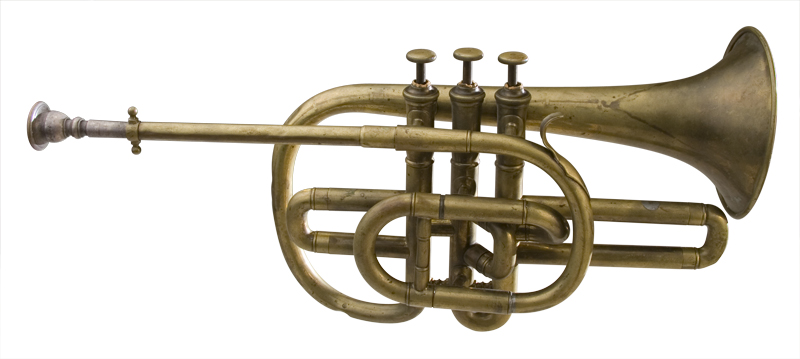Cornopean
Unnamed, circa 1840
In 1814 what became known simply as the Stölzel valve was invented by Heinrich Stölzel and Friedrich Blühmel, thereby becoming the first of many different designs to come forth during the height of the Industrial Revolutuon. Other prominent designs included the box, Vienna, Berlin, rotary and Périnet.
The Frenchman Halary is generally credited with inventing the cornet by adapting the Stölzel valve to a post horn. A post horn is a valveless cylindrical brass or copper instrument with cupped mouthpiece that was used to signal the arrival or departure of a post rider or mail coach. It was used especially by postilions of the 18th and 19th centuries.
The instrument commonly had a circular or coiled shape with three turns of the tubing, though sometimes it was straight. It is therefore an example of a natural instrument. The cornet was developed from the post horn by adding valves.
Initially called a cornet à piston or cornopean, the instrument became popular in France, Britain and Germany. Over time, German manufacturers switched to the rotary valve and others to the Périnet; in both cases most likely because by comparison the original Stölzel equipped models played with noticeably more resistance.
